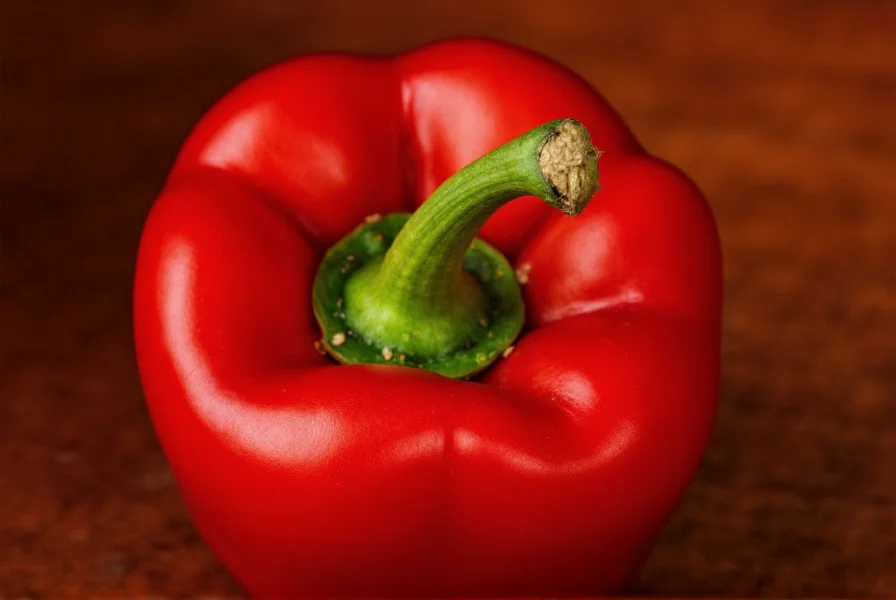Understanding the world's hottest pepper requires knowledge of how we measure chili heat. The Scoville scale, developed by pharmacist Wilbur Scoville in 1912, quantifies capsaicin concentration—the compound responsible for that burning sensation. While early testing relied on human tasters diluting pepper extracts until heat became undetectable, modern laboratories now use high-performance liquid chromatography (HPLC) for precise, objective measurements.
The Carolina Reaper: King of Heat
Born from selective breeding between a Pakistani Naga pepper and a Red Habanero, the Carolina Reaper features distinctive red, bumpy skin with a characteristic stinger-like tail. Despite its extreme heat, it offers a complex flavor profile with initial fruity sweetness before the intense burn sets in approximately 30-45 seconds after consumption.
| Pepper Variety | Average SHU | Peak SHU | Record Year |
|---|---|---|---|
| Carolina Reaper | 1,600,000-2,200,000 | 2,480,000 | 2013-present |
| Trinidad Moruga Scorpion | 1,200,000-2,000,000 | 2,009,231 | 2012-2013 |
| Ghost Pepper (Bhut Jolokia) | 800,000-1,041,427 | 1,041,427 | 2007-2012 |
| Naga Viper | 876,000-1,382,118 | 1,382,118 | 2010 |
Safety Considerations for Extreme Heat
Handling peppers exceeding 1 million SHU requires serious precautions. Always wear nitrile gloves when processing Carolina Reapers and avoid touching your face. The capsaicin oil can transfer to sensitive areas causing severe irritation. If you experience burning skin, apply milk or oil-based products rather than water, which spreads the oil. For accidental eye contact, seek immediate medical attention.
Consumption should proceed with extreme caution. Start with minuscule amounts—less than 1/8 teaspoon of minced pepper. Have dairy products like milk or yogurt readily available as they contain casein that breaks down capsaicin. Never consume pure pepper extract, which can cause chemical burns to the mouth and digestive tract.

Historical Context of Heat Records
The quest for the world's hottest pepper has evolved dramatically over the past two decades. Before laboratory verification became standard, many claims circulated without scientific backing. The Ghost Pepper's 2007 verification at 1 million+ SHU shocked the culinary world, doubling previous records. Breeders then began systematic cross-pollination to push heat boundaries further, leading to the Moruga Scorpion and eventually the Carolina Reaper.
Some challengers have emerged claiming higher heat levels, including the Dragon's Breath and Pepper X, but none have received official Guinness World Records verification through proper laboratory testing protocols. The Carolina Reaper maintains its title through consistent, verified measurements across multiple independent tests.
Culinary Applications and Responsible Use
Despite its fearsome reputation, the Carolina Reaper has legitimate culinary applications when used responsibly. Chefs incorporate tiny amounts to create award-winning hot sauces, infused oils, and specialty dishes where the pepper's fruity notes complement rather than overwhelm. The key lies in precise measurement—many professional kitchens use digital scales capable of measuring to 0.01 grams when working with super-hot peppers.
Home cooks should exercise extreme caution. Never estimate quantities by sight when working with peppers above 500,000 SHU. Use dedicated cutting boards and utensils that won't transfer capsaicin to other foods. Remember that cooking doesn't reduce capsaicin levels—your kitchen surfaces and ventilation system will need thorough cleaning after preparation.
Responsible Sourcing and Growing
For those interested in growing Carolina Reapers, start with verified seeds from reputable agricultural suppliers. These peppers require specific growing conditions: 90-100°F temperatures, high humidity, and well-draining soil with consistent moisture. The plants typically produce fruit 90-120 days after planting, with peak heat developing as the peppers fully ripen to their characteristic red color.
Commercial growers must follow strict safety protocols for harvesting and processing. Many operations now use specialized extraction methods to create pepper derivatives while minimizing direct handler exposure. The increasing popularity of super-hot peppers has led to improved safety standards across the industry.
Frequently Asked Questions
How much Carolina Reaper equals one jalapeño in heat?
A single Carolina Reaper measuring 2 million SHU equals approximately 400 jalapeños (5,000 SHU each) in total heat. However, heat distribution isn't linear—concentrated capsaicin in the Reaper's placenta creates more intense localized burning than dispersed jalapeño heat.
Can eating Carolina Reaper cause permanent damage?
Occasional consumption of properly measured amounts won't cause permanent damage for healthy individuals. However, excessive consumption can trigger severe gastrointestinal distress, and pure pepper extracts have caused chemical burns requiring hospitalization. People with gastrointestinal conditions should avoid super-hot peppers entirely.
Why does milk help with pepper burn but water doesn't?
Capsaicin is hydrophobic (water-repelling) but fat-soluble. Milk's casein protein binds to capsaicin molecules and washes them away, while water merely spreads the oil around your mouth. Full-fat dairy products work best, though oils and alcohol-based solutions can also provide relief.
How do scientists safely handle Carolina Reaper extracts?
Researchers use specialized equipment including fume hoods, nitrile gloves (latex doesn't protect against capsaicin), and sometimes full-face respirators with organic vapor cartridges. They work with diluted solutions and follow strict laboratory protocols to prevent accidental exposure. Even minute amounts of pure capsaicin extract require extreme handling precautions.











 浙公网安备
33010002000092号
浙公网安备
33010002000092号 浙B2-20120091-4
浙B2-20120091-4